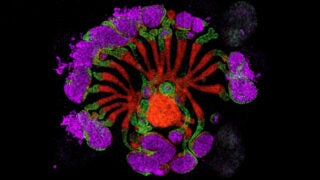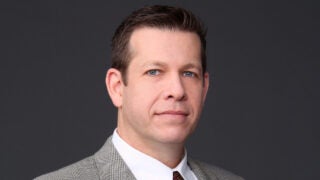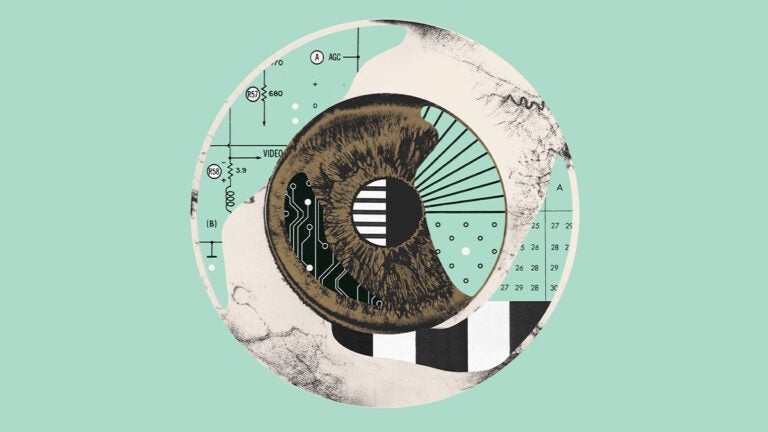
A retinal prosthesis for people with vision loss is only one example of the groundbreaking bionics research happening at USC. (Illustration/Mike McQuade)
The Paralyzed Will Walk, the Blind Will See: The Bionics Revolution Is Coming
Electronic eyes, robotic arms and exoskeletons? USC experts meld man (and woman) with machine.
Iron Man is just a fantasy from the universe of superheroes. Or is he?
Injured and in captivity, the fictional billionaire Tony Stark builds a high-tech exoskeleton to survive, escape and help save the world alongside the Avengers. The armored suit gives him superhuman strength, the ability to fly and an array of elaborate weapons. Stark increasingly becomes one with his technology: His brain interacts with the suit, and the suit interacts with his brain.
To Charles Liu, the scenario goes beyond science fiction. The director of the USC Neurorestoration Center believes it’s fast becoming science reality for people paralyzed by spinal cord injuries. A few select volunteers are among the first to test a bionic bodysuit designed to help them walk again.
Not only would this exoskeleton enable people to move, but the user could also feel each step — a prospect both heady and complicated. Breathing life into the suit involves disciplines from advanced surgery to computational mathematics, says Liu, a professor of clinical neurological surgery at the Keck School of Medicine of USC. “You cannot pack more technology into a tighter space. And we’re applying these technologies to the most complex and human part of our body: the brain.”
This tech isn’t about making people better, stronger or faster than ever before: It’s about helping people get more out of life again. If we could bring the brain and body back in sync, patients might do what so many others take for granted: walk. But the advances in technology go beyond treating paralysis. At USC and across the world, bionic eyes, robotic hands and even memory implants are part of the growing field of restorative health research. Liu’s work gives us a peek into this brave new world of bionics.
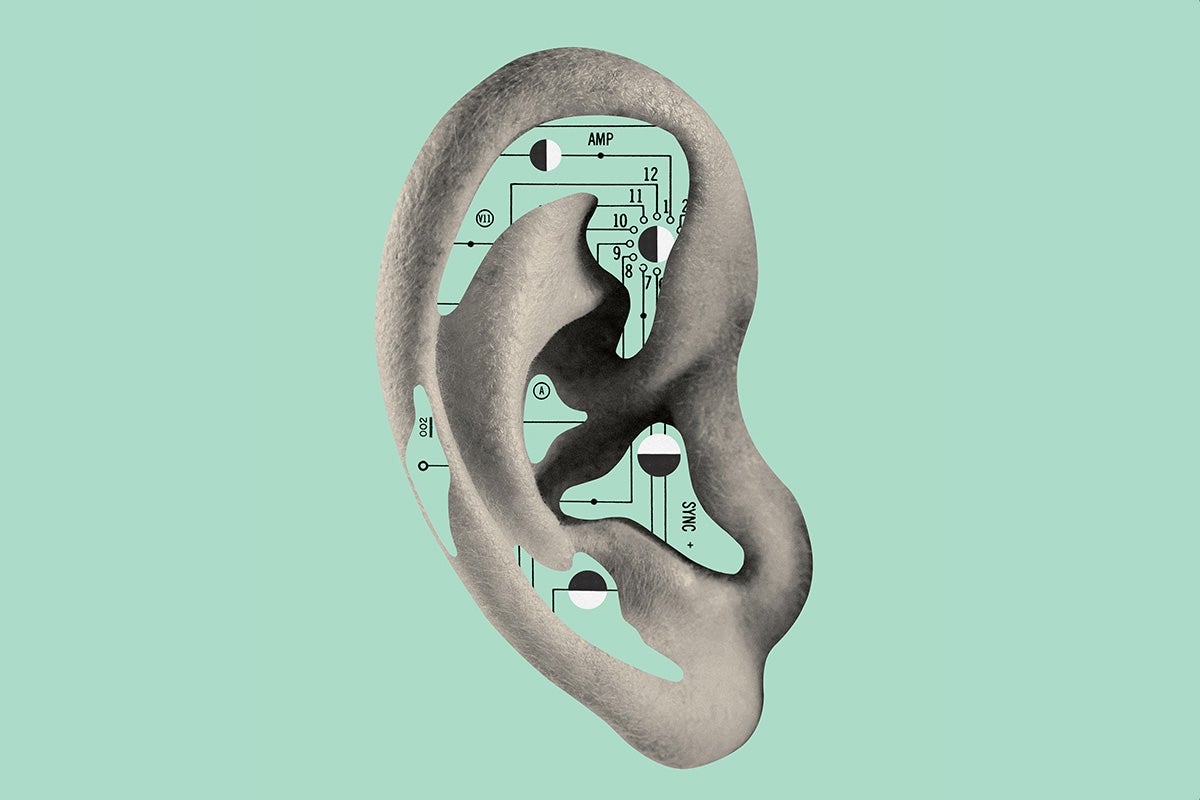
USC bionics technology could help restore ability to walk and see
The act of drinking water from a cup seems so simple.
Sure, you might do it without much thought. But consider a robotic arm trying to lift a glass to a user’s mouth. It has so many pieces of information to consider. How much force is needed to lift the cup? Is it a delicate wine glass or a heavy mug? Are there any obstacles in the way? How much does the glass need to tilt before spilling?
“Of course, once you initiate the action, lots of things need to be right in order for you to successfully complete it,” Liu says. “For example, if you touch the glass and it happens to be much lighter than you expect, you have to react to that. This requires constant updating of information and constant feedback.”
The sheer number of neurons — the human brain features about 100 billion of them — and their complexity make it hard to tease out exactly how individual thoughts and actions result in movements.
Humans unknowingly count on electrochemical reactions between interconnected nerve cells (or neurons) in our brain and nervous system to orchestrate our movements. The sheer number of neurons — the human brain features about 100 billion of them — and their complexity make it hard to tease out exactly how individual thoughts and actions result in movements.
Yet that’s a necessary step if patients are to realize the benefits of neurorestorative therapies.
To “decode” the activity taking place in the various regions of our brains, researchers implant electrodes that record the electrical impulses comprising our thoughts. The electrodes then replicate those impulses to allow a person with a prosthetic arm to react, in real time, to the surprises of our reality — like a plastic glass that’s lighter than expected. This kind of system is called a closed loop because it involves a two-way conversation: brain to arm, arm to brain, and so on.
That’s one system. Now think about the complex calculations needed to make a full bionic suit. The ambitious project tackles one of the most important goals for patients with spinal cord injuries: restoring the ability to walk. With an $8 million grant from the National Science Foundation, Liu hopes to help patients reach that goal, alongside other researchers at USC, Caltech and the University of California, Irvine.
Liu’s team acquires the billions of signals from the brain that tell us how to walk, and UC Irvine researchers translate those signals into commands that control the robotic suit and develop the sophisticated electronic implants. The USC team performs brain surgeries to implant the bionics technology. Caltech scientists then strive to replicate the sensations that are relayed to the brain so users “feel” themselves walking.
Without research volunteers, though, there’s no suit. Volunteers recruited through the USC Epilepsy Care Consortium help researchers develop the brain control technology they need. And if the suit comes to fruition, future patients will have people like Cynthia Martinez to thank. Martinez, who became paralyzed after a spinal cord injury, tests prototypes of the bionic suit. A team of scientists often trails behind the volunteers, wheeling the “command center” for the suit — a collection of computers on a cart. Despite Martinez’s health struggles, the team’s mood remains cheerful. Liu has a photo of him and Martinez laughing together, a moment he remembers well.
He had asked her how she might want to help develop the suit, and she said she wanted to contribute to “‘the fashion part, because these things look so ugly,’” Liu says. “I just threw my head back and laughed, because it never occurred to me.”
It’s only reasonable to forgive Liu for prioritizing function over form. As it is, he earned his medical degree after getting his doctorate in engineering. Bridging those two fields keeps him busy. Combining medicine and technology also shapes the underlying premise of the USC Neurorestoration Center, which he directs with co-director Christianne Heck, a professor of clinical neurology. It aims to use engineering advances to improve life for people with brain and nervous system problems, from Alzheimer’s disease to epilepsy.
The bionic suit is one of several projects underway at the center. Researchers are helping paralyzed patients regain the sense of feeling, hold objects in their hands and even play a game of rock-paper-scissors with a prosthetic arm they control with their thoughts. What’s at the heart of their work? They refuse to believe that patients with neurological diseases and trauma can never recover.
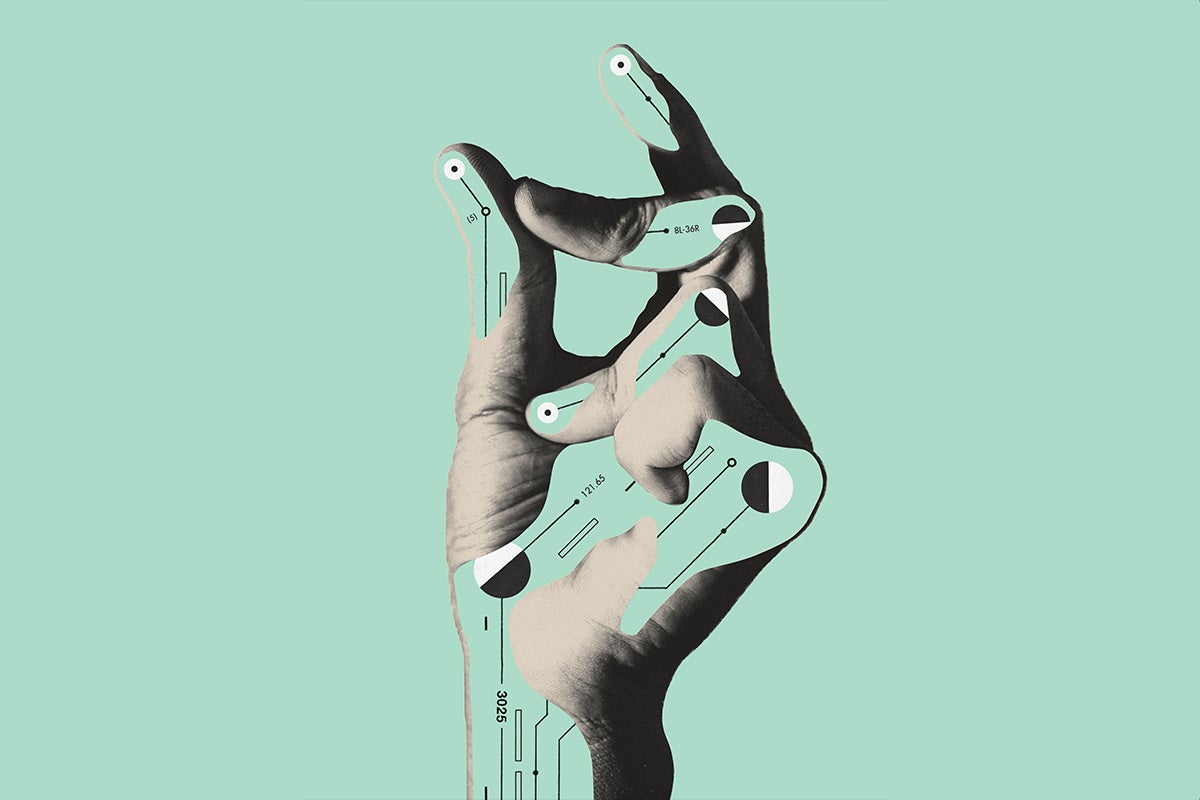
Advances in biotech at USC hold promise for mental health
Their efforts to push bionics technology forward have precedent at USC. Robotics researchers worldwide continue to build on foundational research conducted by Gerald Loeb, professor of biomedical engineering at the USC Viterbi School of Engineering. He developed one of the first sophisticated tactile sensing systems for prosthetic hands.
And only a few years ago, the world hailed the first bionic eye, a groundbreaking retinal prosthesis for people with impaired vision. Called the Argus II, the device was developed by Mark Humayun, University Professor of Ophthalmology, Biomedical Engineering and Integrative Anatomical Sciences, and Gianluca Lazzi, Provost Professor of Ophthalmology and Electrical Engineering. It enables people blinded by retinitis pigmentosa to see shapes, movement and — maybe someday soon — color.
Today, USC Viterbi’s Maryam Shanechi continues in their footsteps.
Shanechi spent her first two years as a doctoral student at MIT applying the principles of electrical engineering and computer science to improve wireless communications. But something nagged at her. How could she use her skills and knowledge to help people more directly?
She found her answer at the intersection of engineering and neuroscience.
“I realized I could decode brain signals instead of wireless signals, which I found fascinating,” says Shanechi, associate professor of electrical and computer engineering and the Andrew and Erna Viterbi Early Career Chair at USC Viterbi.
Within two years, Shanechi had built her first brain-machine interface, which translated simple thought sequences (up and left, left and down, right and up) into the movements of a cursor on a screen. She was hooked.
Shanechi now applies an artificial intelligence technique called machine learning to decode neural activity patterns in the brain. Her work explores not only the brain regions and signals responsible for movement and motor function but also those responsible for mental and neuropsychiatric disorders, such as depression and anxiety. Her aim is to use the same electrodes that decode brain activity to deliver tailored and targeted electrical stimulation therapies to patients for whom no other treatments work.
In the case of major depression, current treatments such as medications and psychotherapy don’t work for 20% to 30% of patients, so having an alternative therapy could significantly improve the quality of life.
Maryam Shanechi
“There is evidence that these mental disorders are caused by abnormal brain activity patterns,” she says. “So the question is if we can regulate and normalize this activity with a new type of brain-machine interface, does it give us an alternative way to transform treatments for mental disorders? In the case of major depression, current treatments such as medications and psychotherapy don’t work for 20% to 30% of patients, so having an alternative therapy could significantly improve the quality of life for these treatment-resistant patients.”
Shanechi has received major funding support for her work, including $11.3 million and $5 million grants from the U.S. Department of Defense and the United Kingdom’s Ministry of Defence, as well as two new awards from the National Institutes of Health. The first, a $2.4 million grant, funds ongoing research on the complex activities linked to motor and mental states in the brain. The second, a $3 million award, will enable Shanechi’s team and collaborators at the University of California, San Francisco to develop a brain-machine interface that decodes a patient’s depression and mood symptoms and reacts with the appropriate level of stimulation therapy to alleviate distress.
“The brain is one of the most complex systems we can imagine, and we really don’t understand how it represents our emotional and motor states or what goes wrong in brain disorders,” she says. “Decoding brain activity patterns is very challenging, and regulating the abnormal patterns to treat brain disorders adds yet another huge challenge.”
Scientists know the work might seem overwhelming, but tools such as artificial intelligence make the obstacles a little less daunting. Across USC, researchers see huge potential in harnessing bionics technology to restore the brain and body.
Liu thinks about how far the bionic suit has come in just a few years. “When I look at what things looked like in 2011 and what they look like in 2021, there has been a huge progression in what we know, the information we can collect and the types of tools we have,” he says. “If the pace bears out, I really believe that these technologies will become part of our lives.”


